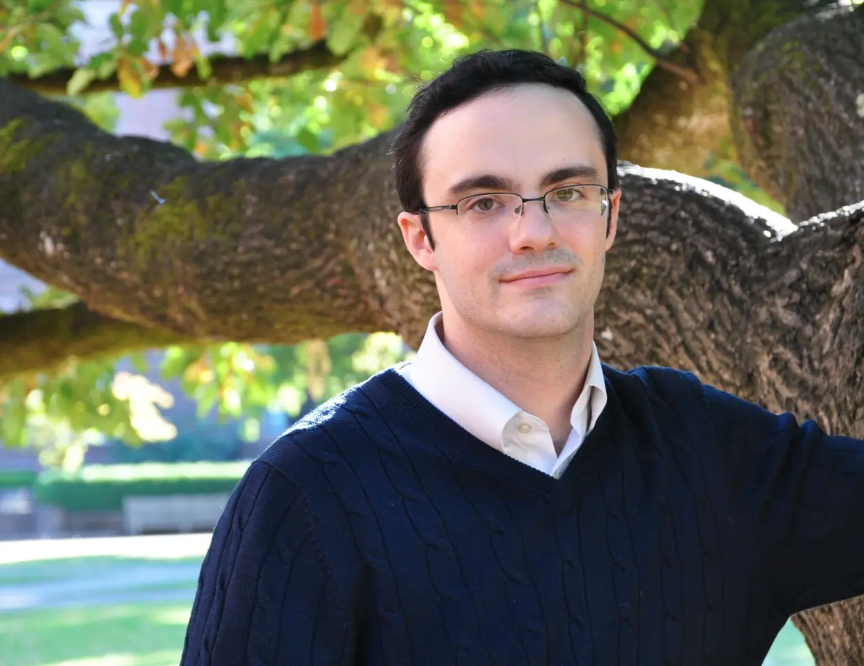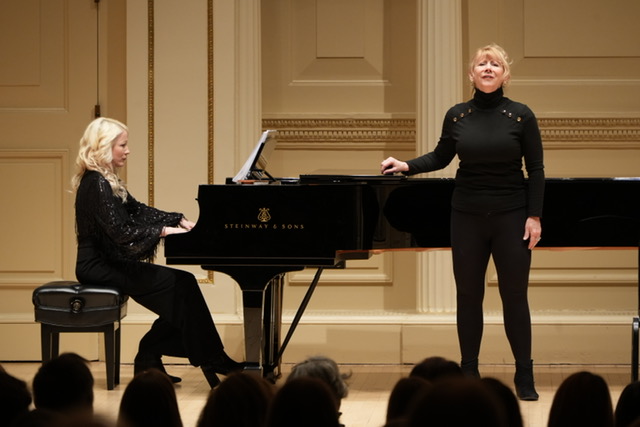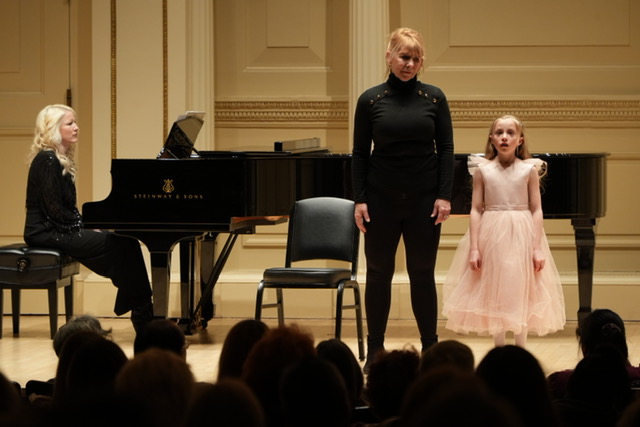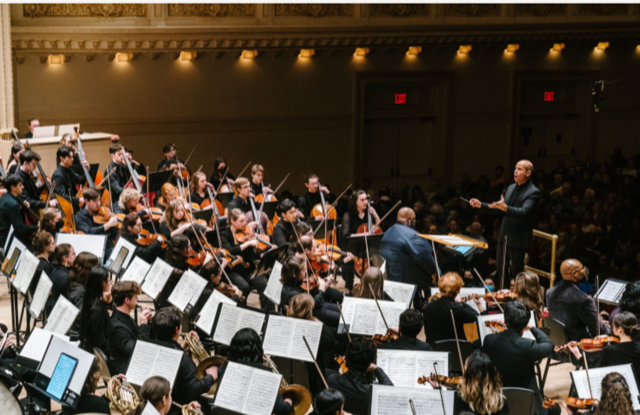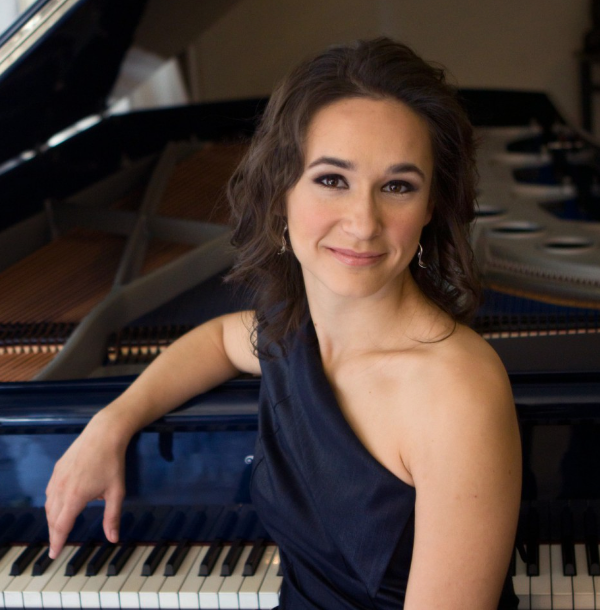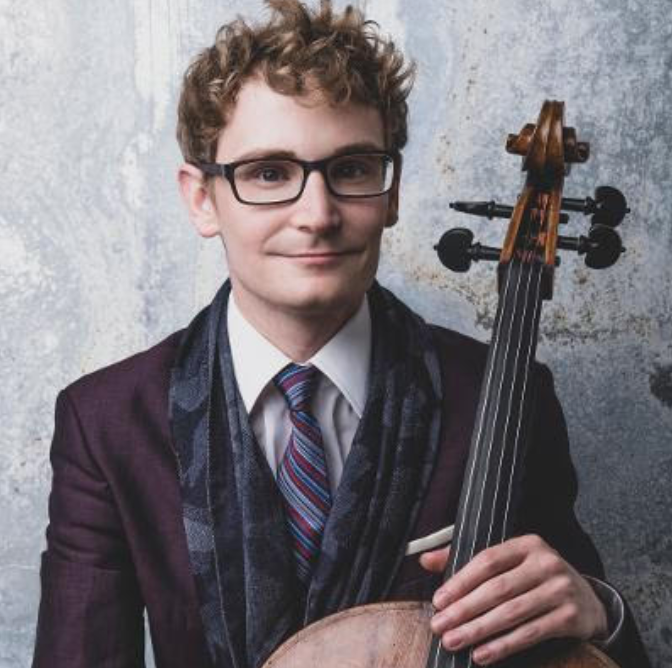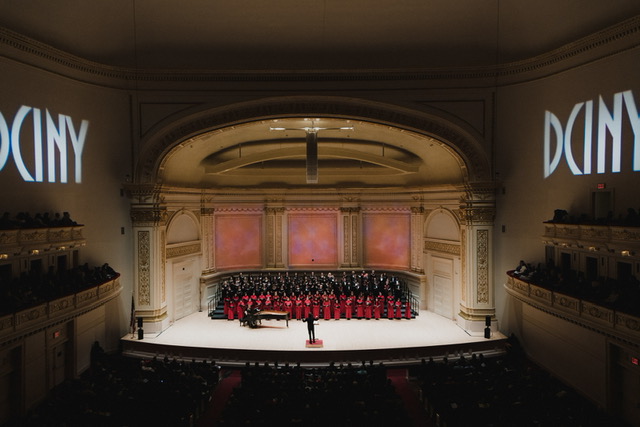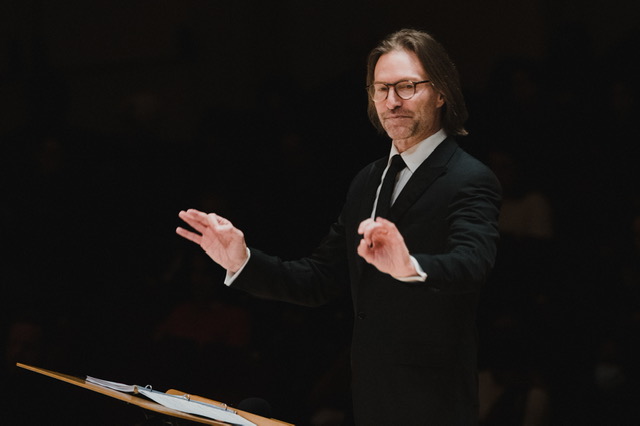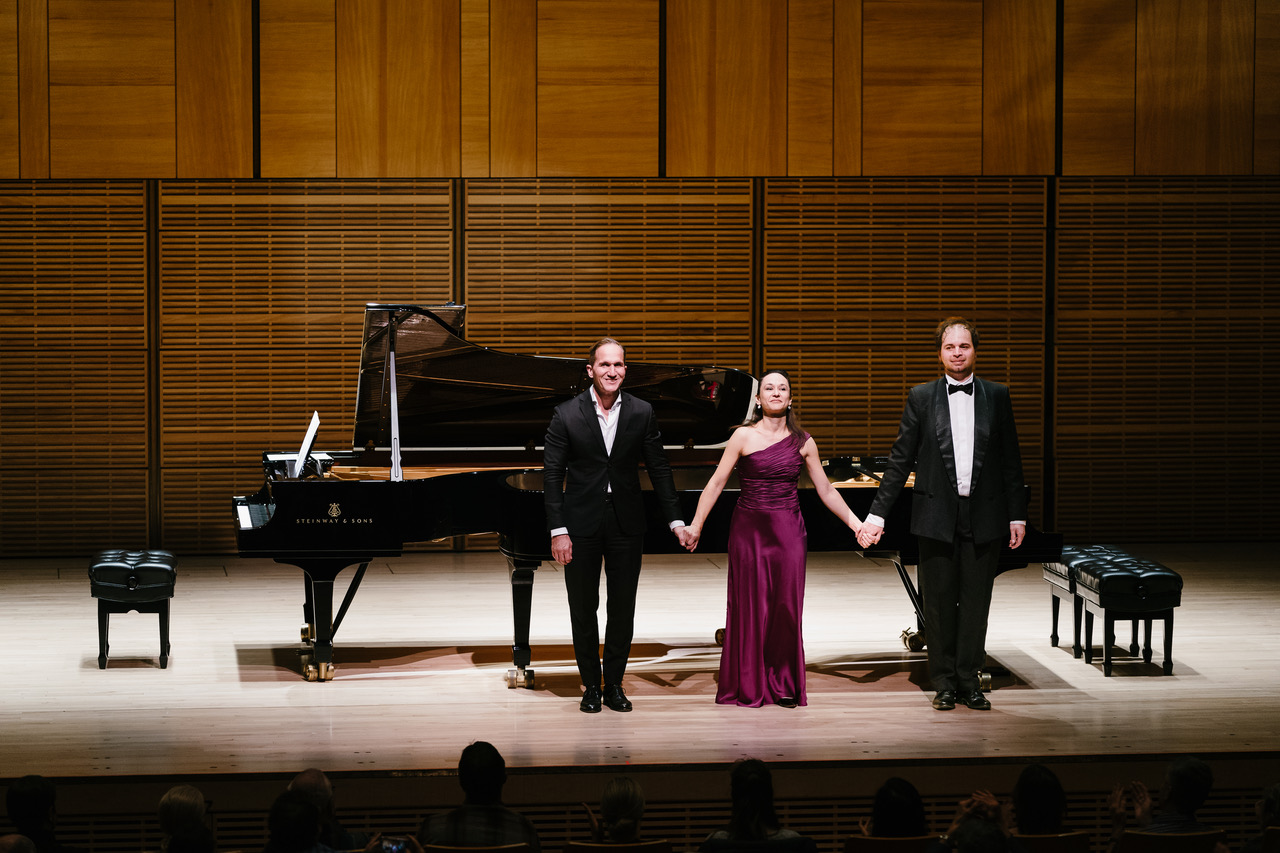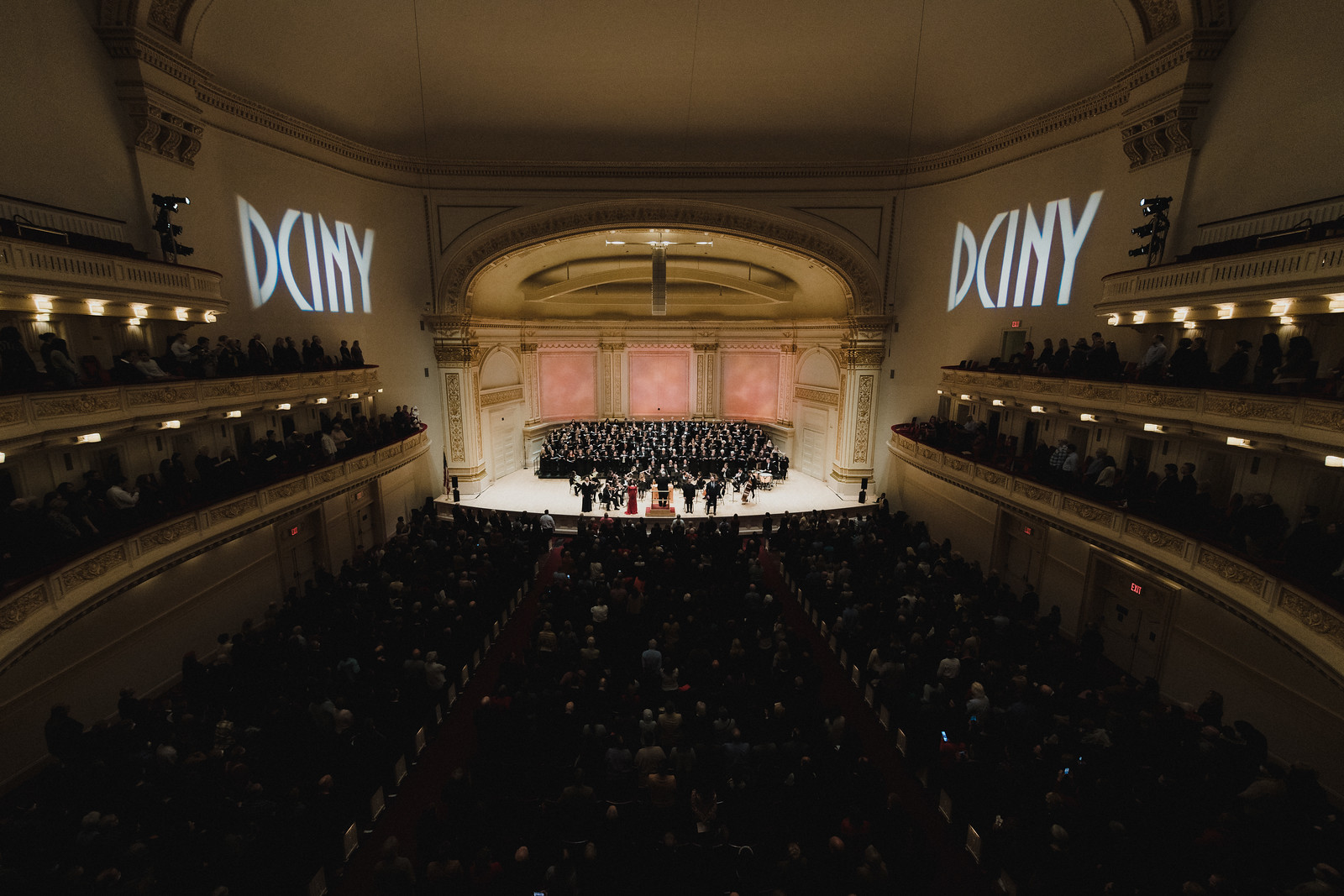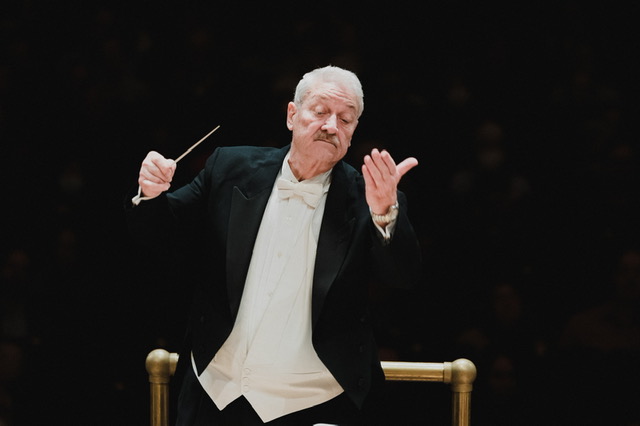Samuel Lord Kalcheim, composer;
Kristyn Michele, tenor; Juan Aguilera Cerezo, cellist
Tobiasz Siankiewicz, alto saxophonist;
Daniel Beliavsky, Jason Weisinger, Nicholas Pietromonaco, pianists
Tenri Institute, New York, NY
March 3, 2023
An eager crowd of music lovers filled the Tenri Institute auditorium this Friday for a concert entitled Ancient Wisdom, Emerging Voices, the New York City debut of composer Samuel Lord Kalcheim (b. 1990). The program offered two major works inspired by Ancient Greek writings, including his Sonata for Violoncello Solo “Three Maxims of Delphi” and his Ancient Hymns and Prayers, a song cycle based on his translations of mostly Greek texts. Rounding out the program were his Six Morning Miniatures for Piano (World Premiere) and Grand Duo for Alto Saxophone and Piano.
The composer’s biographical notes state that “Building on an expertise in 18th and 19th c. styles and forms, Samuel writes expressive new music for today’s sensibilities.” For full disclosure, I had run across some of Mr. Kalcheim’s more youthful work through mutual friends nearly a decade ago and had been surprised by the predominant 18th- and 19th-century aspects of his writing. As a diehard devotee of tonality, I had cheered but also had wondered how this particular style, something of a throwback, might play out in the “new music” world. How would it find its place in new music circles where such styles are often peremptorily dismissed? How would these styles of long ago weave into our current world? Well, I am happy to report that this evening offered heartening answers. Mr. Kalcheim is proving to be a promising and accomplished young composer with much to offer the world.
The concert opened with Grand Duo for Alto Saxophone and Piano, given a bravura reading by Tobiasz Siankiewicz and pianist Daniel Beliavsky. The piece, originally written for and recorded by saxophonist Jessica Dodge-Overstreet, lives up to the “grand” title in its bold gestures and flourishes, starting with a fortissimo chordal announcement at the piano and moving on to impassioned, long-breathed phrases in the saxophone. It is (in the composer’s words ) “something of an homage to the French origin of the saxophone, blending French Romantic and Impressionistic influences, with a hint of fin de siècle Russian music.” At times one heard hints of Fauré – and at times, in its sparer textures, of Ibert – but in any case, it conveyed something of the intoxicating beauty of France where we are told most of it was composed (Paris). It is a piece that should find a happy home on many saxophone recitals. Mr. Siankiewicz and Mr. Beliavsky seemed both more than up to its demands. My one complaint was that (as often is the complaint with Tenri) the sound was overwhelming from both instruments, overwhelming enough to cause actual pain and invite earplugs. Either the performers need to know this in advance and adjust fortissimos accordingly, or there need to be some sound-absorbing panels or cloths brought into the room.
Next, filling out the first half, came the Sonata for Violoncello Solo “Three Maxims of Delphi, written for and performed here by Spanish cellist Juan Aguilera Cerezo. The first movement was based on the maxim Gnothi seauton (Know thyself) and was appropriately searching and probing. Written idiomatically for cello, it conveyed inner conflict through its dissonant counterpoint, a pedal point heard almost as an idée fixe, and the gradual and skillful development of its material. Mr. Cerezo played with a complete commitment to the music, and his audience was rapt.
The second movement Meden Agan (Nothing in excess) was a study in musical balance, the opening chant-like figures (faint hints of Dies Irae) proceeding to a more dance-like section. The third and final movement, Eggua para d’ate (A pledge brings ruin), exploited the cello’s extremes of dynamics and timbres, as the music conveyed still more emotional grappling. It was (as was this entire piece) refreshing in its genuineness, avoiding fads or flash in favor of its own course; there were moments, still, when one wondered whether parts might have been compressed slightly with no loss of the sense of odyssey.
After intermission, we heard Six Morning Miniatures for Piano (World Premiere), composed, as Mr. Kalcheim describes, “in a series of mornings as a way to start the day. Each briefly explores a little musical world, almost in a naive way.” Pianist Nicholas Pietromonaco performed these with great sensitivity to their varied moods. They were a joy to hear, bringing to mind miniatures of Grieg (Lyric Pieces) and sometimes those of MacDowell, Gretchaninoff, and others, though each with its own individual spirit. Little Wild Horse (a far cry from Schumann’s Wild Horseman) was gentle and dreamy. Morning Tea conveyed a workaday comfort, with just enough color to be an eye-opener. A shift from imagery to contrasting abstraction came in Two-Part Invention (an interesting exercise exploiting an easily discernible theme) and Bitonal Study (with such understated contrast that one easily forgot it was bitonal). In a return to imagery, Hummingbirds (Toccata) benefitted from Mr. Petromonaco’s rapid fingerwork and then disappeared with a playful humor that wasn’t lost on the attentive audience. (Was I in a mood or were there hints here of Dies Irae as well?) Finally, Summer’s End (Pastorale) brought the set to a touching close, bringing to mind some miniatures of Rebikoff.
Just for clarification here, with all the mentions of hints and similarities, these are not criticisms. Just as poets through the centuries can describe the same subject with both overlap and individuality, the same applies in music, without detriment if one is true to oneself. As for influence, the great composers left us seeds – and sometimes doors to Narnia. Casting them aside as used, like casting tonality aside, is “throwing the baby out with the bathwater.” For this reason, I hope that Mr. Kalcheim stays his course without the temptation to be “original” for originality’s sake.
Originality is also inherent in the exploration of new voices, and Mr. Kalcheim’s final work on the program, Ancient Hymns and Prayers, is just that. Based on his own translations from Ancient Greek texts, he composed the cycle for non-binary tenor Kristyn Michele as part of a goal of creating works for non-traditional voices; the program title “Ancient Wisdom, Emerging Voices” was thus quite fitting.
The six songs of Ancient Hymns and Prayers started beautifully with Prayer to Pan. Kristyn Michele sang with a pure and focused tone and captivating emotional involvement, and Jason Weisinger was a wonderful collaborator here, establishing a hallowed mood with his hypnotic repeated figures. Hymn to the Earth was a beauty as well, bubbling over with youthful energy and voluptuous color. Occasionally in lower registers the voice was overwhelmed by the very bright piano, but this was perhaps inescapable given the venue – and even more pronounced in the next movement, Praise to the Sun. Hymn to the Night brought more complex and sometimes tortured emotions, and if there was some debt to Scriabin here, it was well-placed.
The fifth song, Prayer to Aphrodite, reflected Mr. Kalcheim’s special sensitivity to text, as the wavering chromaticism suggested the fickleness of love – not a surprise, given his role as translator of the text, but worthy of mention. Finally, Epitaph, the sixth song, closed the concert with a haunting setting of the lines “As long as you live, shine!” (and some more hints of the Dies Irae chant). It was a moving close to a memorable evening.
Ten long years have passed since that first hearing of Mr. Kalcheim’s youthful work – a different phase of life, different compositions – and since that first glimmer, Mr. Kalcheim has composed for soprano Estelí Gomez, the Delgani String Quartet, University of Oregon’s Musicking Conference and the Elsewhere Ensemble, in addition to current projects shared on this occasion. He currently plans a recording of his works and is clearly not at a loss for creative projects. Stylistically, his music now reflects a wide range of influences from Romanticism, Impressionism, early 20th-century Russian composers, and much more, but it retains overall its rootedness in a traditional tonal language. More importantly than that, though, it reflects a fidelity to his own creativity, which he cultivates with integrity and intelligence. More power to him!

